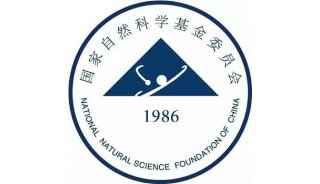科技创新是社会经济发展的“神经中枢”
原文地址:http://news.sciencenet.cn/htmlnews/2023/11/512310.shtm
“习近平主席在今年10月举办的第三届‘一带一路’国际合作高峰论坛上承诺,将继续实施‘一带一路’科技创新行动计划。这个计划非常重要,它抓住了科技这个对经济、社会各个领域的发展都有着重要影响的关键元素,可以说是抓住了社会发展的‘神经中枢’。”近日,南方科技促进可持续发展委员会(COMSATS)执行主任穆罕默德·纳菲斯·扎卡里亚(Mohammad Nafees Zalaria)在接受《中国科学报》专访时说。
今年是“一带一路”倡议及中巴经济走廊提出第十年,扎卡里亚在巴基斯坦发起并赞助了“一带一路”可持续发展倡议全球智库(BRISD),他希望通过该智库为“一带一路”倡议的可持续发展提供广泛动力。

穆罕默德·纳菲斯·扎卡里亚。受访者供图
《中国科学报》:请谈谈这次中国之旅的感受。
扎卡里亚:这是我第一次访问中国,先后参加了在重庆举行的“一带一路”科技交流大会、在天津举行的生物制造产业创新发展国际论坛,现在又来到北京中国科学院大气物理研究所。这是一次非常具有启发性的经历,中国在科技发展方面的突飞猛进令人惊讶。可以看到,科学技术已经深度融入了人们的生活,无论何时环顾四周,你总能看到科学和技术的元素。
《中国科学报》:你今年在巴基斯坦创建并赞助了“一带一路”可持续发展倡议全球智库,这背后有什么想法?
扎卡里亚:我在参与高级别的“一带一路”部长级会议时,曾与中国科技部一位副部长对此有过深入讨论。打动我的是,他说中国希望越来越多地与其他发展中国家合作,慷慨地分享中国的专业知识,与伙伴国家构建命运共同体。我从中巴经济走廊的角度对“一带一路”进行了研究,产生了设立BRISD的想法,希望人们了解这个与中国洲际互联互通倡议相关的内容及其裨益。此次中国之行,我固化了这一想法。10年来,已经有150多个国家和30多个国际组织参与了“一带一路”合作。
COMSATS的成员国都是发展中国家,都希望通过科技发展解决所面临的问题,“一带一路”科技创新行动计划为此提供了合作机遇。例如,“一带一路”倡议在全球创造了数十万个就业机会,使1亿多人口摆脱了贫困。中巴经济走廊是“一带一路”倡议的旗舰项目,为巴基斯坦创造了数以千计的就业机会。中巴两国在能源领域的合作,使巴基斯坦新增发电量超过1万兆瓦,大大解决了巴基斯坦电力短缺的问题。
同时,通过“一带一路”倡议,中国正在与亚洲、非洲、欧洲和拉丁美洲的国家建立合作,开展科技创新活动、发展基础设施、投资不同领域。总的来说,这些伙伴关系创造了数以百万计的就业机会,使数亿人摆脱了贫困,提高了生活水平,这是一项伟大的事业,是一个巨大的成功。
这种共建“一带一路”的共享情怀,在新冠疫情发生后得到了体现。中国向各国发放了数十亿个口罩和20多亿剂疫苗,这是前所未有的大规模国际援助。今年是“一带一路”倡议提出十周年。我希望通过COMSATS的平台,特别是与BRISD合作,能够战略性地推动“一带一路”倡议的可持续发展。
《中国科学报》:作为中巴经济走廊发展的见证者,你对其发展有何展望?
扎卡里亚:中巴经济走廊除了在能源领域有项目外,其基础设施发展元素也很重要。除了发展瓜达尔港、铁路网等,它还有3条总长约2200公里的走廊。你能想象这里有多少机会吗?这些走廊不会是空的,将进行各种经济和社会生产活动。例如,路上会有成千上万辆卡车,将货物从一个地方运送到另一个地方。
这也是一个非常经济的走廊,通过它将外国物资运往中国的成本将大大降低。这对中国,尤其是巴基斯坦来说,意味着巨大的机遇。未来,医院、大学、住房、道路网络、智能城市等将沿着这些路线建设。想象一下,这在财政上意味着多少机会。
《中国科学报》:作为COMSATS执行主任,你如何看待这一组织在推动发展中国家科技合作中的作用?
扎卡里亚:COMSATS是由巴基斯坦科学家、诺贝尔物理学奖获得者阿卜杜勒·萨拉姆(Abdus Salam)教授构思设立的。建立COMSATS的首要目标是通过南南合作弥合发展中国家和发达国家之间在知识、科学和技术方面的差距。
COMSATS成立至今已有29年,我们拥有27个成员国,中国和其他17个国家是该组织的创始成员国。我们还有25个国际科学技术卓越中心,希望通过这些中心应对成员国面临的挑战。在这个发展中国家的大家庭中,所有成员国都应该分享各自的专长、互相推广各自的产品,这才是未来发展之路。
自从1年前担任执行主任以来,我一直在推动一件事,即在每次的能力建设和专业知识分享活动之后进行一些评估,看看它如何以及在多大程度上为这些活动的受益者作出贡献。我们举办了许多研讨会和培训项目,我期待着收到一些反馈,这样我们就可以改进它。我们也希望COMSATS卓越中心的研发活动满足行业的需求,如果一个产品能够解决行业的突出问题,成为可持续发展的一部分,那么它将被商业化,并让所有利益相关者受益。
《中国科学报》:你如何看待COMSATS在推动“一带一路”合作中的作用?
扎卡里亚:COMSATS的合作仅限于科技领域,当涉及多元文化和国际政治时,情况会变得不同。当前,我们所在的亚太地区仍面临严峻挑战。几个世纪以来,这一地区作为全球大博弈的一部分在历史上一直存在竞争,现在仍然具有这种可能性。亚太地区国家存在地缘政治,我们承受不起对抗。对抗造成破坏,合作带来繁荣,也能规避破坏。这个地区的国家需要了解出现分歧的风险。
“一带一路”最大的好处是项目多,特别是发展中国家之间的科技专家交流项目。如果你看一下统计数据,无论是中国、巴基斯坦、斯里兰卡、尼日利亚还是其他国家,年青一代都在这些地区的人口中占主导地位。青年人的精力需要引导和激励,以进行建设性和互利的合作。这些项目将为促进可持续合作与发展注入巨大能量。
《中国科学报》:中国有句老话:“一根筷子轻轻被折断,十双筷子牢牢抱成团。”你如何看待这句话对于推动南南合作,乃至更广泛的全球合作的意义?
扎卡里亚:这句话对于国际合作的意义是,群体的力量比单个国家的力量更容易实现一个目标。十个大脑聚集在一起做一件特定的事情,更容易取得一些成效。
我相信,在不同领域表现优秀的国家通过相互合作和分享,彼此一定能够受益,以此实现共同的目标或应对共同的挑战,比如应对全球气候变化、洪水、火灾、干旱、蝗灾等。
Scientific and technological innovation is the "nerve center" of sociology-economic development
“At the Third Belt and Road Forum for International Cooperation held in October this year, President Xi Jinping pledged to continue to implement the Belt and Road Science and Technology Innovation Action Plan. This is very important because it captures the key element of science and technology, which has an important impact on the development of all sectors of the economy and society. It can be said that it captures the "nerve center" of socio-economic development." Recently, Dr. Mohammad Nafees Zakaria, Executive Director of the Commission on Science and Technology for Sustainable Development in the South (COMSATS) and Patron-in-Chief of the Belt and Road Initiative for Sustainable Development - BRISD, said in an interview with China Science DAily.
This year marks the 10th year of the "Belt and Road" Initiative and the China-Pakistan Economic Corridor (CPEC), Zakaria conceptualized and patronizes as its Chief Patron the "Belt and Road Initiative for Sustainable Development (BRISD), a Global Think Tank being established in Pakistan, by which he hopes to strategically add momentum to the sustainable development aspect of the "Belt and Road" initiative widely.
China Science Daily: What’s your feelings about this trip to China?
Zakaria: This is my first visit to China. I have attended the First Belt and Road Science and Technology Exchange (BRST) Conference in Chongqing, the International Forum on Innovation and Development of bio-manufacturing Industry in Tianjin by TIB, and now I am here at the COMSATS Center of Excellence International Centre for Climate & Environmental Sciences (ICCES-China) under Chinese Academy of Sciences in Beijing. It was a very enlightening experience, and China"s progress in leaps and bounds in science and technology was amazing. You can see that science and technology have been deeply ingress into people"s lives. Whenever you look around, you will find yourself surrounded by the elements of science and technology.
China Science Daily: You sponsored and created the Belt and Road Initiative Sustainable Development (BRISD) a global think tank in Pakistan. What is the thinking behind this?
Zakaria: When I participated in the high-level Belt and Road Ministerial Meeting, I had an in-depth discussion with the Chinese Vice Minister of Science and Technology. What struck me was that he said that China wants to cooperate more and more with developing countries, generously share its expertise, and cultivate a shared future with partner countries. I had already carried out research on BRI from the perspective of CPEC and conceptualized the Belt and Road Initiative for Sustainable Development - BRISD to create awareness of the relevance and benefits of this initiative of China’s intercontinental connectivity project. On this trip to China, I got strengthened. Over the past decade, more than 150 countries and over 30 international organizations have participated in the Belt and Road cooperation.
The member countries of COSMATS are all developing countries, and they all hope to solve the challenges they face through scientific and technological development, and the Belt and Road Initiative provides opportunities for cooperation. For instance, the Belt and Road Initiative (BRI) has generated hundreds of thousands of jobs globally, contributing to the upliftment of over 100 million people from poverty. Likewise, the China-Pakistan Economic Corridor (CPEC), the flagship project of the Belt and Road Initiative, has created jobs for thousands of people in Pakistan. The cooperation between China and Pakistan in the energy sector has allowed Pakistan to add more than 10,000 megawatts of electricity, solving the problem of electricity shortage a great deal.
Similarly, through the Belt and Road Initiative, China is building cooperation with countries in Asia, Africa, Europe, and Latin America to carry out scientific and technological innovation activities, develop infrastructure, and invest in different sectors. These partnerships have created millions of jobs and lifted hundreds of millions of people out of poverty to a higher standard of living, a great undertaking and a great success.
This kind of sharing and caring sentiment of the Belt and Road Initiative was manifested in the aftermath of the COVID-19 pandemic. China has distributed billions of masks and more than 2 billion doses of vaccines to other countries, which is unprecedented international assistance on this scale. This year marks the 10th year of the Belt and Road Initiative. I hope that through COMSATS’ platform, in particular, and BRISD, we can strategically promote the sustainable development aspect of the Belt and Road Initiative.
China Science Daily: As a witness to the development of the CPEC, what is your outlook on the development of this economic corridor?
Zakaria: The CPEC besides having its projects in the energy sector, its infrastructure development element is significant. In addition to developing Gwadar port, railway network, etc. it has three corridors of around 2200 kilometers long each. Can you imagine how many opportunities are there? These corridors will not be empty, they will be filled with all kinds of economic and social productive activities. For example, there will be hundreds of thousands of trucks on the road, carrying goods from one point to another.
It is also a very economical corridor, through which the cost of transporting foreign materials to China will be greatly reduced. This means huge opportunities for China and Pakistan, especially for Pakistan. In the future, hospitals, universities, housing, road networks, smart cities, and more will be built along these routes. Imagine how much opportunity that means financially!
China Science Daily: As the Executive Director of COMSATS, how do you see its role in promoting scientific and technological cooperation among developing countries?
Zakaria: COMSATS was conceived by Professor Abdus Salam, a Pakistani scientist and Nobel Laureate in Physics. The overarching objective of the establishment of COMSATS was to bridge the gap in knowledge, science, and technology between developing and developed countries, through South-South cooperation.
COMSATS is now 29 years old and has 27 member countries, with China and 17 other countries among the founding members of the organization. We also have 25 international centres of excellence in science and technology through which we hope to address the challenges faced by our member states. The way to the future and progress is that all member states should share their expertise among this comity of nations of the developing countries and promote each other’s products.
One of the things I"ve been pushing for since I assumed charge as Executive Director a year ago is to do some evaluation after each capacity building and sharing of expertise activity to see how and how much it contributed to the beneficiaries of such activities. We"ve run many workshops and training programs, and I"m looking forward to receiving some feedback so we can improve it. We also hope that the research and development activities of the COMSATS Center of Excellence are in line with the needs of the industry, and if a product can solve the challenges of the industry and become part of sustainable development, it will be commercialized and bring benefits to all stakeholders.
China Science Daily:How do you see COMSATS "role in promoting Belt and Road cooperation?
Zakaria: COMSATS "cooperation is limited to science and technology, but when it comes to multiculturalism and international politics, things are different. At present, our region is facing very daunting challenges. This region has a history of rivalries as part of Great Games for centuries and still holds the potential for such a rivalry. Countries in the Asia-Pacific region have geopolitical and territorial differences, however, we can’t afford confrontation. Confrontation will cause damage, cooperation will bring prosperity and avoid damage. The countries in this region need to understand the risks in case of discord.
The best part of the Belt and Road Initiative is that there are many projects, especially exchanges of scientists or technical experts among developing countries. If you look at the statistics, whether it"s China, Pakistan, Sri Lanka, Nigeria, or other countries, the younger generation dominates these regions’ populations. The energy of young people needs direction and galvanizing towards constructive and mutually beneficial cooperation. These projects will create a great energy to promote sustainable cooperation and development.
China Science Daily: There is an old saying in China: "While one chopstick can be broken easily, ten chopsticks firmly held together cannot be." How do you see the significance of this statement in advancing South-South cooperation and, more broadly, global cooperation?
Zakaria: For international cooperation, this means that it should be easier to achieve a goal with the power of a group than with the power of an individual country. When ten brains get together to do a particular thing, it"s easier to get something done.
-
焦点事件

-
焦点事件

-
焦点事件

-
焦点事件












